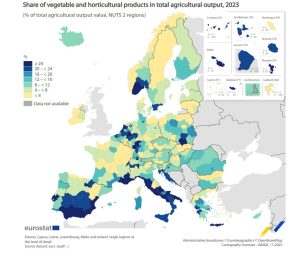On June 12, U.S. President Donald Trump stated that he wants to “do something” to protect immigrants farmworkers from being deported if they are in an irregular situation.
The forced deportations of undocumented immigrants have sparked protests in Los Angeles in recent days, some of which have led to clashes with police.
The demonstrations were triggered after immigration officers made arrests in the parking lot of a store.
U.S. agricultural industry groups have long urged President Trump to exempt their sector from mass deportations, which could severely disrupt a food supply chain heavily reliant on immigrant labor. “Our farmers are being badly hurt because, you know, they have very good workers. They’ve worked for them for 20 years. They’re not Americans, but they’ve turned out to be, you know, great, and we’re going to have to do something about that,” he told reporters at a White House event.
“We’re going to have an order on that fairly soon, I think. We can’t do that to our farmers and also to the leisure sector, to the hotels,” he added.
He did not specify what changes the executive order would implement or when it would take effect.
Trump said he would need to act with “a lot of common sense” because “what’s going to happen, and what is happening (is that) they get rid of some,” and they end up hiring “criminals who have come in” to the United States.
During the election campaign, Trump warned he would carry out the largest deportation campaign of undocumented immigrants in U.S. history, although it would focus on those with criminal records.
Numbers that matter
Nearly half of the approximately 2 million farmworkers in the country, along with many workers in the dairy and meat sectors, lack legal status, according to the Departments of Labor and Agriculture.
U.S. Agriculture Secretary Brooke Rollins told CNBC that Trump was reviewing all possible measures, but that Congress would ultimately have to take action.
According to U.S. media, the White House has ordered an increase in deportations to up to 3,000 people per day.
Source: El Economista




















